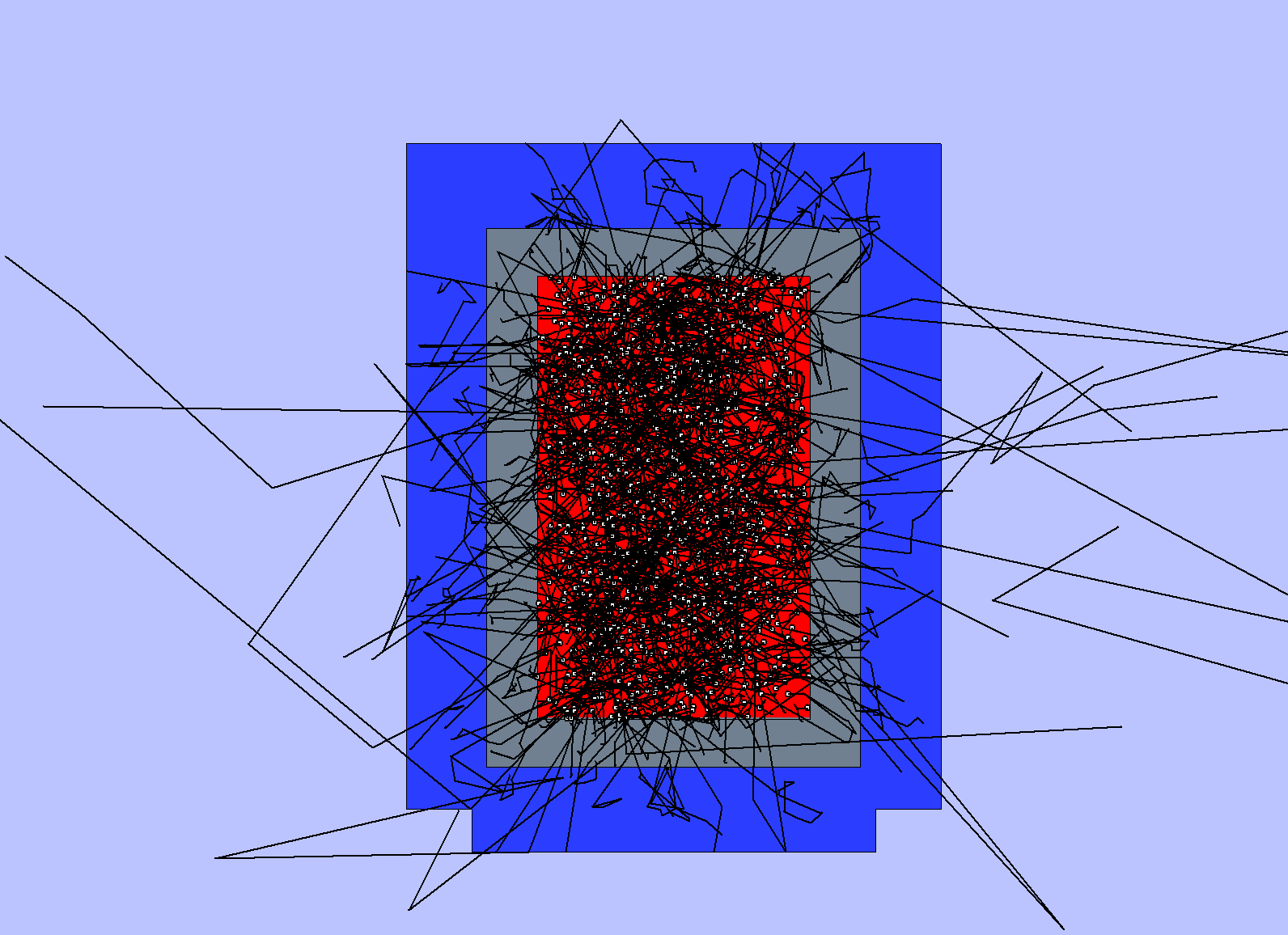Decommissioning & Dismantling of a Nuclear Power Plant
For the dismantling of a nuclear power plant, I conducted numerous detailed simulations. These include a determination of the activity inventory in the reactor building, generation of collective dose estimates for the approval procedure, dose rate calculations for planning of shielding measures during dismantling, and simulations for loading planning of nuclear disposal containers.
Determination of the Activity Inventory
- Activation calculations for many individual components to completely determine the activity inventory of the entire reactor building
- Calculations using the approved code package SCALE 6
- Data basis: neutron flux and spectrum in the respective component, operating history of the plant, material composition (including all trace elements)
- Verification based on measurements
The results of the calculations are extensive nuclide vectors for different points in time after reactor shutdown.
Since for some components activation calculations cannot be performed in principle or due to predominant contamination, additional studies for the determination of activity are conducted by means of dose rate measurements and calculations with MCNP.
Dose Rate Calculations
A detailed reactor model is developed for all calculations using MCNP, which includes the following components:
- Reactor pressure vessel (RPV) including its plating
- Reactor internals (fuel elements removed)
- Control rods and drives
- All relevant piping systems
- Various waste materials produced during decommissioning
- Biological shield including ducts and openings
- All relevant building and concrete structures, entire exterior building
Since the radiological conditions are constantly changing during dismantling, the model is adapted for many different dismantling states. For example, a flooded and opened RPV or pipelines of the primary circuit being segmented.
The very complex source definition of the simulation model is based on the previously performed activation calculations.
- Contains all components included in the geometry model (except for distant concrete structures)
- Additionally: contaminated concrete surfaces and internal contamination of pipes with complicated geometry (e.g. toroidal surfaces)
As a result of the calculations, spatially resolved dose rate distributions or dose rate values at discrete detector positions are obtained. The reference point in time is freely selectable. A verification of the model and the calculations is done on the basis of several dose rate measurement campaigns.
Loading Planning of the Waste Containers
The objective of this work package is to optimally plan the loading of the waste containers so that all dose rate and activity limits defined by the acceptance requirements of the interim and final repository are met.
- Many different container configurations: Konrad containers of different sizes and with different shielding configurations, as well as MOSAIK® containers, also with different shielding thicknesses
- Consideration of all relevant nuclides
- Calculation of the ambient dose equivalent caused by loaded disposal containers
- Simulation of bare waste matrices to account for the dose rate limits of the ADR transport guidelines
For each container configuration, the nuclide-specific contributions to the dose rate are obtained for different loading masses. Thus, the self-shielding effects of actual waste matrices can be accounted for.
- Calculations are performed for homogenized waste matrices for segmentation planning of large components and loading of containers
- Reliable planning of radiological overloading possible
Some containers were modelled and simulated with realistic waste matrices. By this, the impact of streaming effects due to inhomogeneities in the waste can be estimated.



